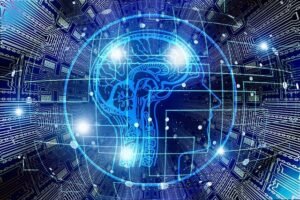What an Artificial Intelligence and Big Data Coexist
 Big Data and Artificial Intelligence are two technologies that are marking the future direction in which data and information will undoubtedly dominate.
Big Data and Artificial Intelligence are two technologies that are marking the future direction in which data and information will undoubtedly dominate.
The amount of data generated in the digital world has been growing exponentially for years. The World Economic Forum has already predicted that the amount of data in “the digital universe” will reach 44 zettabytes by 2020. This information will mobilize the future’s social, political, and economic decisions in a process many organizations have already adopted. Thus, big data and AI are the two technologies necessary to conclude.
These two systems generally work together so that artificial intelligence draws on the stored data and uses it for Big Data analysis, achieving the improvements and optimizations these technologies allow.
Big Data and Artificial Intelligence: what they are and how they are transforming the world
Big data and artificial intelligence are two closely related technologies that enable process and decision-making optimization.
Big Data, often translated into American as microdata, refers to enormous and complex sets of information. Due to their size, they require fast-processing computer applications and technologies. Big data also includes large amounts of data and the ability to exploit them or draw conclusions that give value to the business.
The characteristics that define Big Data are volume, speed, variety, integrity, and value.
Big Data analysis allows organizations to discover hidden patterns, unknown correlations, and all the stored information, which helps them make better decisions more efficiently. In this way, data scientists and other users access information that allows them to anticipate trends or prevent problems.
Some examples of how Big Data analysis is being applied:
- In industries, optimizing the performance of machines and devices. Extensive data analysis helps machines and devices become more efficient, intelligent, and autonomous.
- The process improvement in companies is ubiquitous and transversal in diverse industries. For example, Big Data analysis makes it possible to optimize supply chains or shipping routes, taking into account information on trends in web searches, social networks, data on genuine buyers, and even weather forecasts.
This analysis is also expected to be applied predictively to machinery maintenance. Platforms such as Nexus Integra appear to use the power of Big Data to optimize processes in the context of significant industrial assets.
- In the medical field, Big Data analysis is already enabling improvements in disease prevention by allowing data to be collated at levels never before imagined.
Artificial intelligence is intrinsically linked to Big Data analysis, which includes many other diverse applications. A machine that applies AI discerns information about its environment and acts according to that information to successfully undertake its tasks. In other words, artificial intelligence implies that machines carry out processes for which, until now, it was believed that only human cognitive capacity was suitable.
 One step further is systems that apply machine learning, a branch within artificial intelligence in which technologies are designed to learn automatically from the patterns they identify among big data.
One step further is systems that apply machine learning, a branch within artificial intelligence in which technologies are designed to learn automatically from the patterns they identify among big data.
In this way, machine learning involves automatic learning of machines that continuously and automatically improve all the processes entrusted to them based on trial/error mechanisms.
What Big Data and Artificial Intelligence combine
By applying both technologies simultaneously, Big Data and AI enhance the possibilities of each of them. The main applications appear in business and industry, where artificial intelligence allows access to predictive and relevant knowledge for decision-making.
Simply put, Big Data is only helpful if artificial intelligence tools appear capable of making sense of it and extracting valuable information from this vast amount of data. Therefore, big data serves as both the foundation and the engine for machine learning and artificial intelligence. It enables these systems to recognize intricate patterns among millions of data points and forecast future actions.
It will be vital to ensure that the data obtained by the organization is also valuable to achieve valuable conclusions from the large amount of data generated by control and monitoring elements (sensors, PLC, SCADA) and databases. This data is dispersed and not standardized, so it is crucial to have a platform capable of integrating data from different sources; in this way, it can unify and store it in the easiest way possible to be visualized and exploited later.…

 Companies worldwide and of all sizes are combining Big Data and AI to achieve competitive advantages.
Companies worldwide and of all sizes are combining Big Data and AI to achieve competitive advantages. Applications of Big Data and Artificial Intelligence
Applications of Big Data and Artificial Intelligence